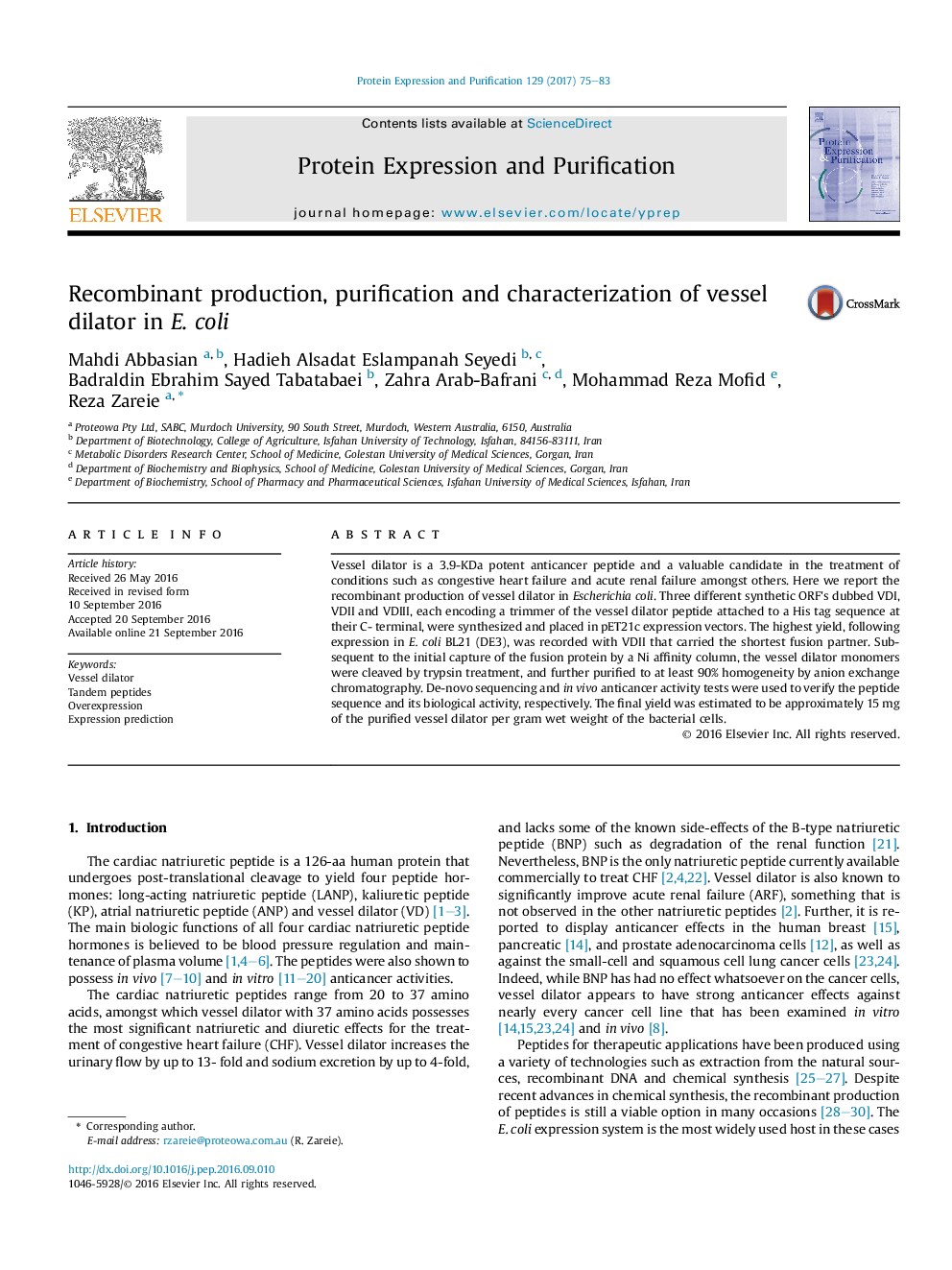| Article ID | Journal | Published Year | Pages | File Type |
|---|---|---|---|---|
| 5516168 | Protein Expression and Purification | 2017 | 9 Pages |
â¢Three constructs for the production of human vessel dilator in E. coli are studied.â¢Construct designs are guided by three prediction algorithms.â¢Expression results are mostly consistent with the predictions.â¢Sequence identity and biological activity of the selected product are confirmed.
Vessel dilator is a 3.9-KDa potent anticancer peptide and a valuable candidate in the treatment of conditions such as congestive heart failure and acute renal failure amongst others. Here we report the recombinant production of vessel dilator in Escherichia coli. Three different synthetic ORF's dubbed VDI, VDII and VDIII, each encoding a trimmer of the vessel dilator peptide attached to a His tag sequence at their C- terminal, were synthesized and placed in pET21c expression vectors. The highest yield, following expression in E. coli BL21 (DE3), was recorded with VDII that carried the shortest fusion partner. Subsequent to the initial capture of the fusion protein by a Ni affinity column, the vessel dilator monomers were cleaved by trypsin treatment, and further purified to at least 90% homogeneity by anion exchange chromatography. De-novo sequencing and in vivo anticancer activity tests were used to verify the peptide sequence and its biological activity, respectively. The final yield was estimated to be approximately 15 mg of the purified vessel dilator per gram wet weight of the bacterial cells.
